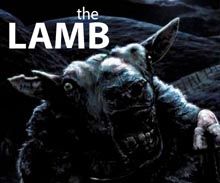
The plot of The Ugly Stepsister is Cinderella as seen from the point of view of Elvira, the elder stepsister. As the film opens, Elvira's mother, Rebekka, has married Otto and moved herself and her girls into his house. At the wedding feast, however, Otto dies of apoplexy. This sends Otto's own daughter, Agnes, into a depressive spiral, and in one such mode, she tells Elvira that her father only married Rebekka for her money. "What money?" Elvira declares before storming off to tell her mother that her dead husband wasn't rich after all. The entire family is now in dire financial straits, because Rebekka is already negotiating the sale of the estate's assets to pay its debts. A glimmer of hope arrives in the form of an announcement from the palace. Prince Julian is to wed and will choose his bride from the virgins of the kingdom. Elvira adores Prince Julian. She reads his poems from a book she keeps with her all the time and aspires to marry him even before the palace announces its wedding ball. Agnes is indifferent. She's got a beau, but she's also penniless, so she plays along. Rebekka will only support Elvira's chances though, even when faced with Elvira's shortcomings. She sends her to Dr. Esthetique for a make-over--removing her braces and resculpting her nose among other things--and then packs her off to finishing lessons under the strict eye of Madame Vanya and her partner, Sophie von Kronenberg. There, she learns deportment and grace, but she's initially hopeless. She also comes into possession of the egg of a tapeworm, which she swallows in order to lose weight. The mountain seems too high to surmount, though, because Agnes is too perfect and she overhears the Prince out in the woods commenting on her appearance with the vow that he could never "fuck that!" Elvira has fortune on her side, though, and Agnes is disqualified from attending the ball when Rebekka discovers that she is not a virgin. She keeps her in the house as a scullery rather than have a scandal on the eve of the ball. She destroys Agnes's dress and leaves her at home. Agnes has help, though, when the ghost of her mother summons silkworms to weave her a new dress. At the ball, Elvira's "improvements" catch the prince's eye and he chooses her for the dance. Elvira is not well, though. The tapeworm has sapped her nutrition and there are ominous rumblings from her stomach. She holds it together long enough to see a mysterious veiled stranger enter the ballroom and sweep the prince off his feet. When the veil is momentarily lifted, only Elvira sees that it is Agnes come to thwart her. But Agnes's enchantment ends at midnight and she flees the ball, losing one of her shoes. The prince vows to marry the girl who fits the shoe. At home, Elvira wrestles the other shoe away and finds that her foot is too big for it. Drastic action is required...
A warning to the curious. I am a jaded viewer of hundreds, maybe thousands, of horror movies. There are things in this film to shock even a jaded viewer like me. The filmmakers don't pull their punches here. If you are sensitive to this...well, don't say I didn't warn you.












































